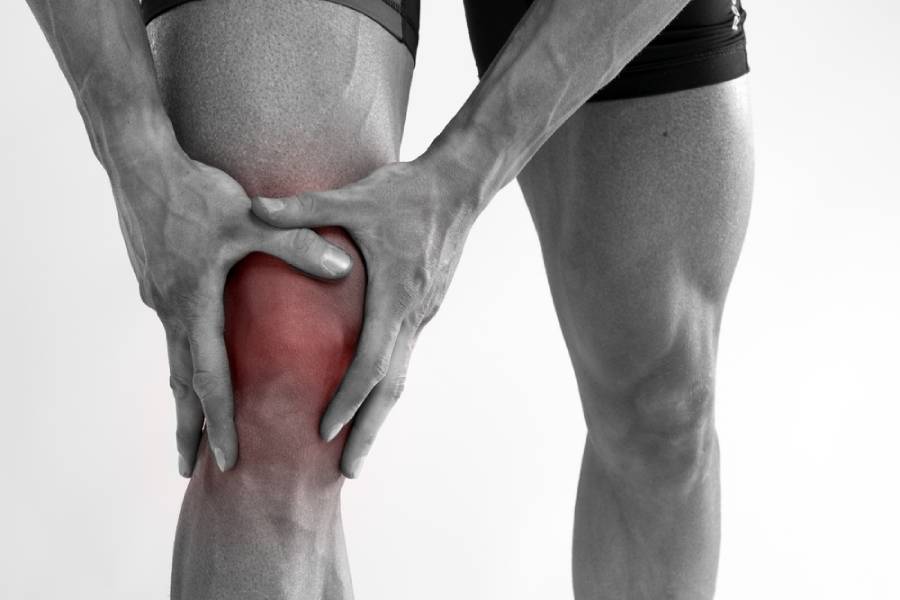A meniscus tear has to be one of the most common injuries for a BJJ athlete. I struggled with it for months, so I’ll share my experience training BJJ with a torn meniscus.
I’m not a doctor. However, I spend several hours working with my sports physician and an orthopedist to recover from this knee injury. I also made several mistakes along the way, that hopefully, you’ll avoid.
Everything you’ll read here is based on my journey. If you suspect you have a meniscus tear, I recommend you pause your training and go to see a doctor before it gets worst.
When something seems to be broken with your car, if you care, you don’t wait for months to see if it fix itself. You most likely will pay a visit to the mechanic as soon as possible before repairing the damage costs you more money. Why your body —your most precious vehicle— should be different?
So, let’s talk about how to train BJJ with torn meniscus (or not), what precautions you should take, and the long-term effects of this injury.
Table of Contents
- Meniscus Tear Briefly Explained – BJJ knee Injury
- Dealing With Meniscus Microfractures
- Should You Train Through Knee Pain?
- Exercises For Meniscus Injuries – BJJ Knee Recovery
- How To Still Train Some BJJ With My Injured Knee?
- List Of Execersices You Can Do With A Meniscal Tear
- What Is The Recovery Time After You Suffered A Knee Injury?
- Training Brazilian Jiu-Jitsu With A Torn Meniscus Final Thoughts
Meniscus Tear Briefly Explained – BJJ knee Injury

There are two main types of meniscus tears:
Acute tear – an isolated injury that occurs suddenly due to trauma; the pain is usually sudden and intense.
Chronic tear – a progressive degenerative disease of the meniscus characterized by repeated episodes of acute knee pain and swelling; the pain doesn’t come on suddenly and is not as intense. Instead, it’s more chronic and constant.
Acute meniscus tears in more detail
An acute meniscus tear is a sudden tearing of the meniscus. The tearing is usually a result of trauma or acute stress. The pull can be from either direction.
Injury
The injury occurs as the knee is flexed and twisted, as in running, stopping suddenly, pivoting quickly, or landing from a jump with bent knees. A blow to the outside of the knee can cause a tear of the outer meniscus.
An inward pulling of the upper leg can tear the inner part. The meniscus can also be damaged by excessive strain on the knee when it is in an unnatural position or out of alignment.
Symptoms
A torn meniscus usually causes sharp, shooting pain when you put pressure on the knee. There is generally swelling and tenderness at the front of the knee, especially on bending and straightening the leg. There may be some instability felt in your knee when you walk or place weight on it.
Another common symptom that could last months is a lack of flexibility when you bend your knee.
don’t miss the Best bjj Gis
Dealing With Meniscus Microfractures

Meniscal microfractures happen usually with sudden twisting forces when the knee is bent or when the foot lands.
They occur in much less than 1% of people who get a meniscal tear. The tearing that produces a microfracture is called a “secondary tear” and does not qualify as an acute tear.
Microfractures happen at different points in the meniscus, not all at precisely the same time, but it’s usually from one side to another.
Don’t Underestimate Microfractures
I was lucky to have only microfractures in my meniscus, but they were enough to keep me off from Jiu-Jitsu training for a long time. According to my physicians, this is the best-case scenario because the treatment probably won’t end in surgery.
Because they weren’t as serious at first, I kept training until they eventually got worst. It took a lot to recover due to my lack of rest.
Meniscal microfractures are not fun either way and can be quite limiting in training and everyday life activities, in my experience.
Should You Train Through Knee Pain?
Despite popular belief in the Jiu-Jitsu community, no pain, no gain is a terrible way to train for most people if longevity is one of the goals.
If you feel severe knee pain after training or rolling, stop immediately and go check it out with a physician. They will tell you exactly what’s going on. After a few physical tests, the doctors will know if you have a meniscus tear.
But, to be sure, they might need an MRI to entirely understand what’s going on with your knee. Once you get clarity about how severe is your condition, consider following a reliable meniscus rehab program.
When Do you know it is time to stop training?
If you have pain, you shouldn’t be training BJJ as usual. This doesn’t mean that you need to stop physical activity altogether. However, when you roll, your knees will twist and bend in odd positions that will cause you insufferable pain and could make things worst than they’re.
Unless you’re a top-level grappling athlete and you are making thousands every time you step into the mats, there’s no real reason to sacrifice long-term health and delay injury recovery by training as usual.
You shouldn’t train through knee injuries at first. But you can certainly train around it. Once you know exactly how bad is your situation, you can let the pain be the limit of how far you train while you recover.
Exercises For Meniscus Injuries – BJJ Knee Recovery
How To Still Train Some BJJ With My Injured Knee?
Once you have a diagnosis from a health professional, there are many things you can do to keep moving forward in your jiu-jitsu training. However, keep expectations reasonable if you got injured recently.
Tournaments, hard rolling sessions, and jumping HIIT are probably off the table. Here are five things you can do to still train some BJJ while recovering.
Prioritize physical therapy
If you’re lucky enough to have only microfractures and you don’t need surgery. But regardless of the injury, treat your physical therapy with the same discipline you drill and roll at the gym. After you have torn the meniscus, several muscles need to get stronger.
You’ll be surprised at how weak you are. Some exercises might look easy, but you will struggle to complete your sets after a severe injury. Respect the process and embrace it.
Ask your doctor when are you ready to start working with a Theraband. After you manage the pain and visit the physical therapist, they might give some exercises to strengthen your quadriceps, hips, adductors, and calves.
You can also follow a solid meniscus rehab program like the one the Theprehabguys offer.

Do conditioning that doesn’t involve your legs
When you feel strong enough and comfortable with your knee, start incorporating some calisthenics exercises.
Dips, Australian pull-ups, chin-ups, and some abs are all good options to stay in shape while recovering. Some lifts, like the overhead and bench press can work as well.
Low-intensity cycling
If you can tolerate some light bending in your knees, some doctors also recommend low-intensity cycling to keep your body moving while recovering.
Make sure that you go on flat streets only with your bicycle and use gear that feels easy to push with your legs. You shouldn’t feel any pain doing this.
Also, your bike should be large enough to allow a full range of motion without causing any discomfort to the injured knee. If you don’t feel safe on the streets, give the spinning bike a try at the gym.
Visit your gym as usual and watch the class
You might not be able to participate in class, but you can still follow the techniques and study your training partners from the outside while also learning something. Going to the gym might also keep you engaged with the community.
Train your mind
If you don’t feel comfortable with any physical activity, which could also be a valid option, get some tutorials from BJJfanatics in areas of your game that you’re not so great at.
Take your time off as an opportunity to gain exposure to more techniques and incorporate visualization exercises for those new techniques.
Another great option is reading BJJ books. While injured, I got Jiu-Jitsu University by Saulo Ribeiro, and Kevin Howell. The book offers a detailed breakdown of all the basic attacking and defending positions in BJJ.
It gives you a simple set of principles to follow to survive and thrive in each position. If you are already familiar with the positional strategy, this book will be super helpful for you.

List Of Execersices You Can Do With A Meniscal Tear
BJJ Gi Pull-ups


- Wrap your BJJ Gi jacket around the bar.
- Grab the collar with your hands, and it will feel like you were doing a very close grip pull-up.
- Pull yourself closer to the bar, and hold for a second.
- Lower yourself down again to the bottom. Do this movement four to five times and then repeat for an additional 3 sets or more as needed.
Read everything about training BJJ with a knee replacement
Regular Pull-ups


- Place your hands on the bar with your palms facing up. Your arms should be directly under your shoulders.
- Slowly pull yourself up until your chin reaches the top position. Keep your elbows close to your sides, and do not lock them out.
- Lower yourself down again to the bottom. When you are at the bottom, pause for a second, then pull yourself back up. Follow this process six times or more, then repeat for an additional three sets or more if needed.
*Pro-tip: Engage your core to make pulling movement easier for you.
Chin-ups


- Place your hands on the bar with your palms facing down. Your arms should be about shoulder wight apart.
- Slowly pull yourself up until your chin reaches the top position. Keep everything tight and controlled.
- Lower yourself down again to the bottom. When you are at the bottom, pause for a second, then pull yourself back up. Follow this process six times or more, then repeat for an additional three sets or more if needed.
*Pro-tip: Control your legs and avoid them from balancing forward and backward to make the exercise easier for you.
Modified Australian Pull-ups


- Find a bar that is about waist height. Walk and grip the bar with your hands shoulder-width apart and palms facing up down. Slowly bring yourself down to the initial L-position position keeping your injured knee straight and your healthy knee slightly bent.
- Lift yourself until your chest touches the bar.
- Slowly bring yourself down by extending your arms. Repeat this movement for six to ten reps and do three sets or more as needed.
check some quality BJJ knee braces here
Abs Without Bending your knee

- Start by lifting your legs and head of the ground to engage your core.
- Bring one leg up and keep it as straight as possible.
- Try to touch your left elbow with your right knee and hold it. This twist motion should feel a little challenging to hold.
- Slowly move the other leg up and down. Do this five to ten times for three to five sets on each side, and your abs will be burning with the added benefit of keeping your injured leg straight and pain-free.
*If you don’t feel the abdominal work, increase the reps until you feel it.


Modified Meniscus friendly Dips


- Find a bar or bench that is about knee height. With your palms facing up down, hold the position with your healthy knee bent and the leg with the meniscus tear in a straight position.
- Slowly bring yourself down as if you were trying to sit on the ground from that position.
- Once you reach the bottom, push yourself up again to the initial position. Do this for six to ten reps for three to five sets as needed.
Avoid overdoing any of these exercises!
While you’re recovering from your injured leg, your body is working hard to repair itself. You might not feel as strong as usual, and that’s fine.
Embrace the process and don’t prioritize conditioning over physical therapy. If you can do both, great! If not, focus most of your energy on making your knee stronger.
What Is The Recovery Time After You Suffered A Knee Injury?
The recovery time from a meniscal tear varies based on the severity of the injury. Often, microfractures heal faster and recover more quickly than complete tears.
Often first-timers cannot put pressure on their knees by themselves within a few weeks. This should be monitored along with your progress, and do not force yourself to try to fight through it if you feel there is something wrong. Don’t ignore your body!
As long as your knee is not giving you any trouble after eight weeks, you should be able to start putting some more pressure on it with the help of a knee brace.
Using a Knee Brace
However, my doctor told me to use the knee brace as little as possible because it might further weaken my muscles, making the healing process slower.
As an active BJJ practitioner, mobility to promote blood flow is what, in the end, will help you get back on the mats faster. Getting back to regular training after microfractures is much faster than recovering from a complete tear in most cases.
The time until you can fully bend your knee and put pressure on it alone can be estimated at around three months for most people.
But, If you’re not responsible with your treatment and keep pushing forward when you shouldn’t, that time in my experience could extend to six to eight months.
recommended knee braces
Rank: | Photo: | Model: | Rating: | More Info: |
#1 | ||||
#2 | ||||
#3 | ||||
#4 | ||||
#5 |
Read about training BJJ without ACL
Training Brazilian Jiu-Jitsu With A Torn Meniscus Final Thoughts
If you’ve never had a meniscus tear from Jiu-Jitsu training before and the doctor confirmed that no surgery is needed, start with the doctor’s recommendations and do precisely what they tell you to do.
Let your doctor guide your training until they clear you to follow whatever routine you were doing before. Once that happens, start slowly adding some strengthening exercises and calisthenics to your routine.
Keep in mind that you’ll need to take frequent breaks from all physical activity until you’re sure that the knee is strong enough for you to start pushing it again.
Resting is one of the most critical factors while training with a meniscus tear. Don’t rush it, and don’t fail to give your knee a rest if it seems too painful while exercising.
We all love BJJ, but longevity and having an overall healthy body come first. Don’t rush back to rolling before your body is ready, and you’ll be able to keep your training going a lot longer.









